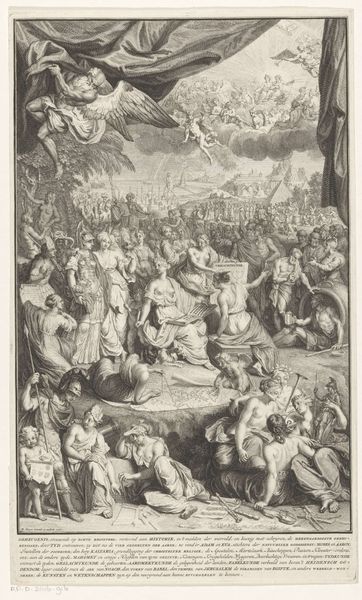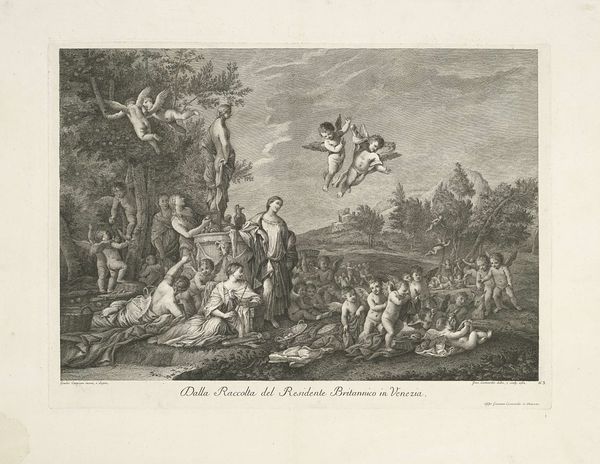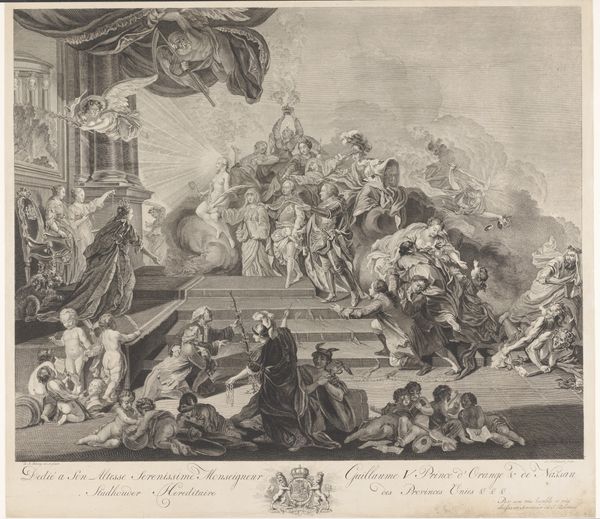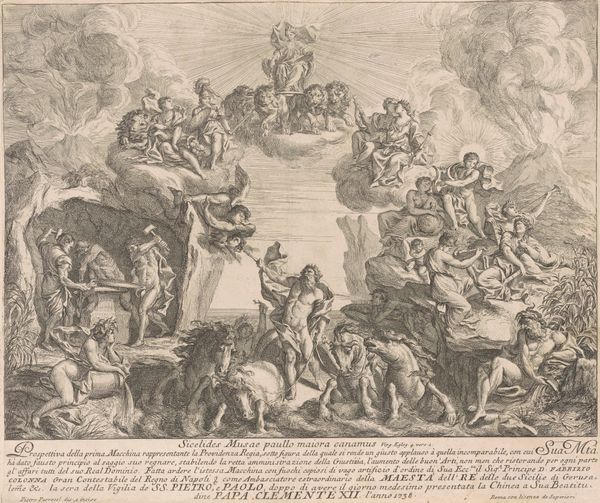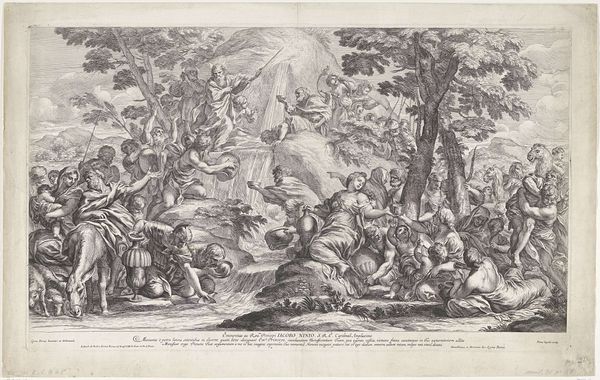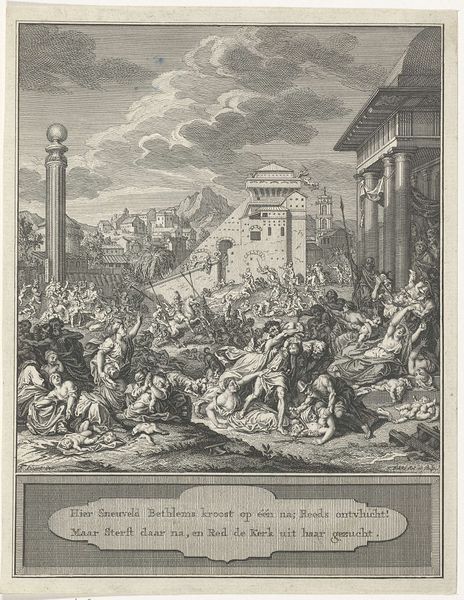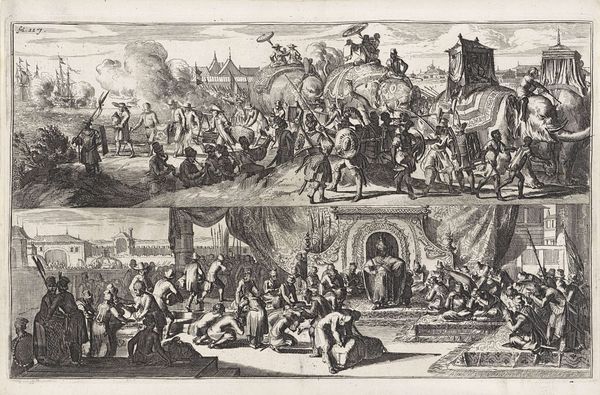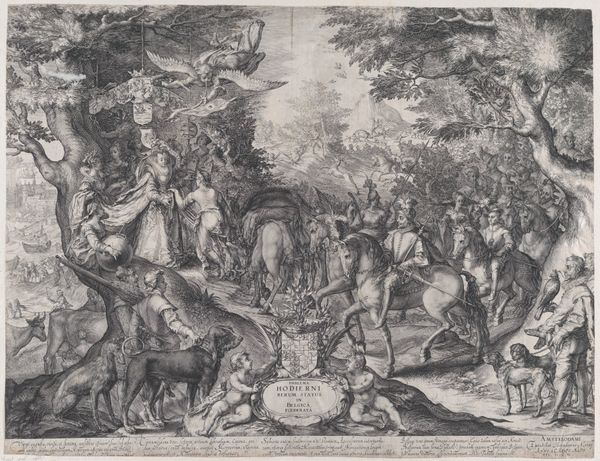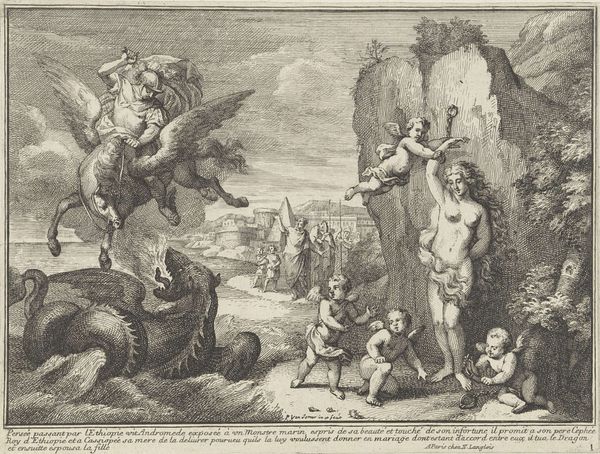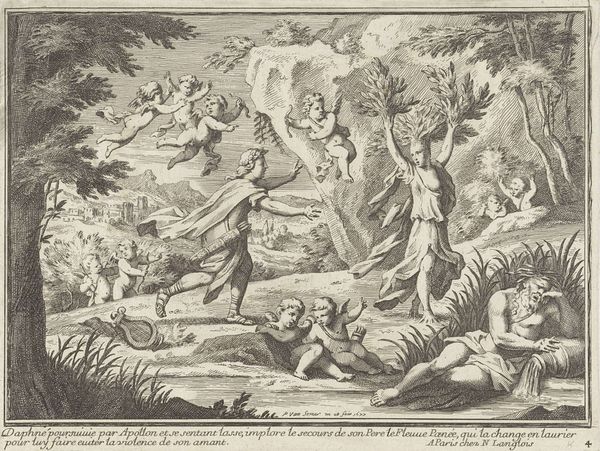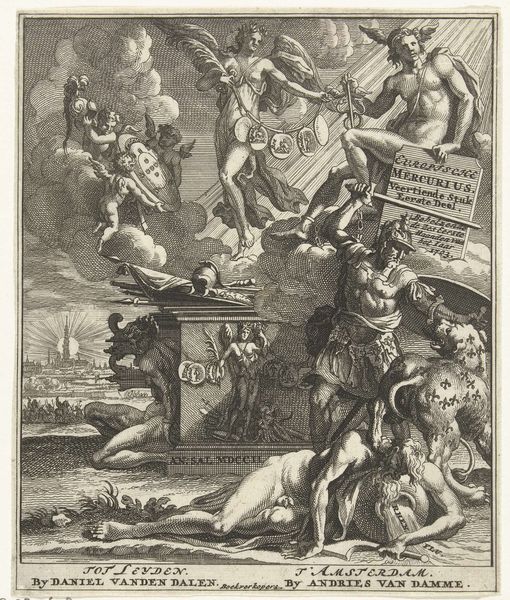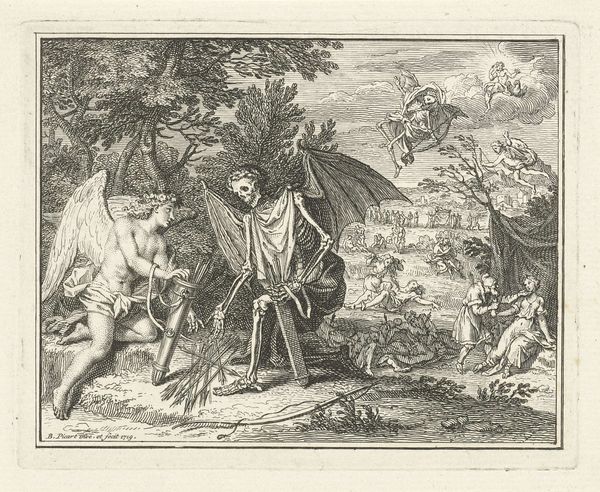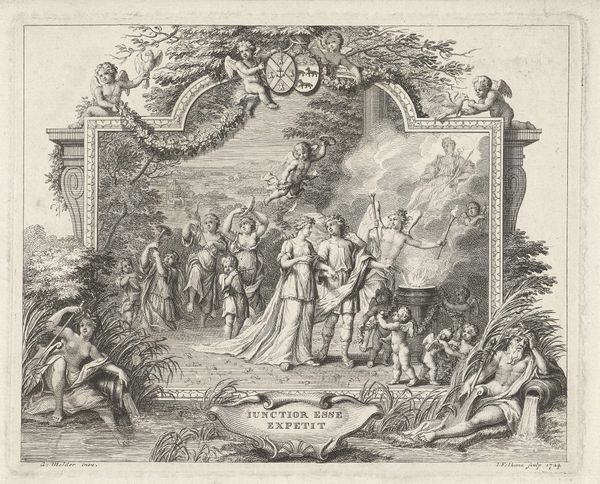
Allegorie op koning Willem III als brenger van vrede in Europa, 1697 1697
0:00
0:00
paulvaniisomer
Rijksmuseum
engraving
#
allegory
#
baroque
#
cityscape
#
history-painting
#
engraving
Dimensions: height 400 mm, width 555 mm
Copyright: Rijks Museum: Open Domain
Curator: This engraving by Paul van Somer II, dating to 1697, is titled "Allegory of King William III as the Bringer of Peace in Europe." Editor: It’s such a densely packed image, isn’t it? Almost overwhelming at first glance. But I suppose that visual complexity reflects the political climate it aimed to address. Curator: Absolutely. As a visual object produced to commemorate the Peace of Ryswick, it engages with particular materials, printing practices and consumption methods which reveal much about Dutch print culture in the 17th century. Consider the division of labour, and where these prints may have circulated to further understand its economic value. Editor: I’m immediately drawn to the foreground. The fallen weapons and armour signify an end to conflict, but the seated figures representing different nations—are they truly at peace, or merely pausing for breath before another power struggle? It feels important to highlight the artist's construction of William as this dominant figure in the work’s composition in the context of colonial endeavors and indigenous populations at this time. Curator: The medium itself, engraving, allowed for mass production, ensuring broad dissemination of the image and its pro-William III message. Furthermore, we ought to look closely at the iconographic and material impact that informs this complex production. Consider the work's allegorical imagery—peace, prosperity and order as represented in the Baroque. Editor: It really begs us to consider the lived experiences of people across Europe. Beyond Willem's image, what did peace look like in individual nations, particularly regarding religion and class. Were some oppressed, suppressed, or completely overlooked despite this period being described in terms of "peace?" Curator: That interrogation is key. But it's equally valuable to examine how an object like this circulates, enters collections and how materials constitute what’s important in considering its legacy and influence on subsequent engravers or makers. Editor: Right. Looking at this engraving with that lens opens up a wider understanding of the time, offering diverse, at times contrasting accounts. It helps me realize how interwoven social conditions were back then – even now. Curator: Indeed. It allows us to move beyond a singular reading of this work toward broader socio-economic patterns embedded within early print.
Comments
No comments
Be the first to comment and join the conversation on the ultimate creative platform.
